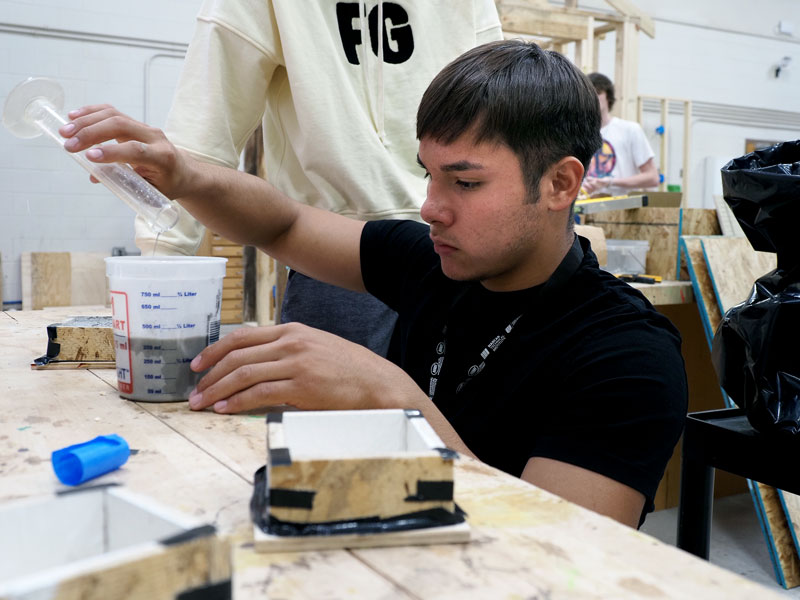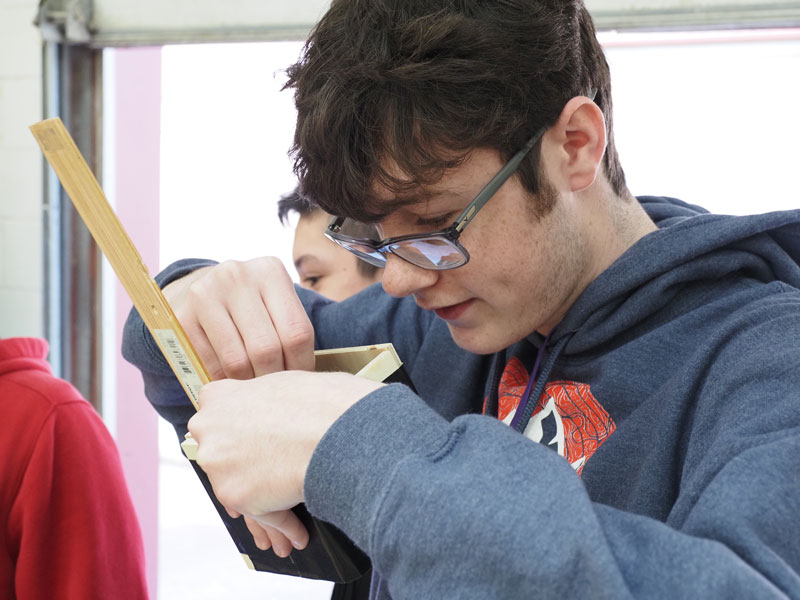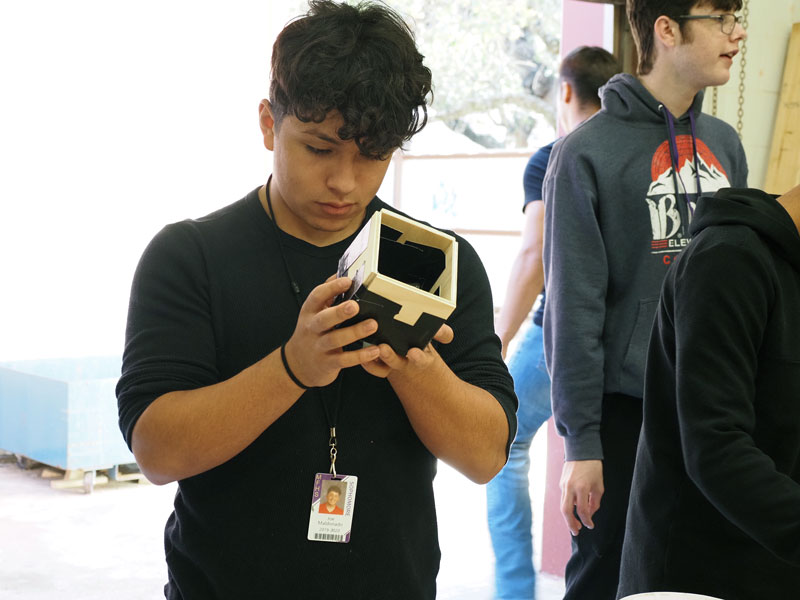A concrete canoe? Marble Falls students test engineering skills

What’s the best water-to-cement ratio for making a concrete canoe? That’s what Marble Falls High School engineering student Gabriel Perez is trying to determine. Leslie Alexander’s Engineering Design I students are designing and building concrete canoes that must hold two people while on the water. Staff photo by Daniel Clifton
When building a canoe, Marble Falls High School student Gabriel Perez looks for the perfect ratio of water to cement.
Yes, cement. It’s a class project that’s testing students’ knowledge of mathematics and engineering.
“We’re trying to find the best ratio, the one that gives us the best concrete,” he said as he examined three small test squares of concrete. Each one had a different water-to-cement ratio.
The last one he poured had the least amount of water, leaving it almost crumbly.
Perez wasn’t sure that one would work, but engineering teacher Leslie Alexander pointed out it would be the most flexible.
Flexible concrete isn’t what one thinks of as a construction material for canoes, especially ones that will be raced later this spring.
“We use concrete because then they have to use mathematics and find out how to float it,” said Alexander about her Engineering Design I students. “They have to design the canoe and build it. They’ve already completed the designs. Now, they’re testing the different concrete mixes to find the best one.”

Her students formed two groups. One is building a concrete canoe in a more “traditional” manner, using Styrofoam as a mold.
Perez and the other group are taking a less traditional route: first forming a concrete mold and then pouring the canoe using a cement mix that forms a more flexible concrete.
Once each team determines the best concrete for their needs, they’ll get down to the business of building their canoes. The plan is to build a 10-foot canoe that can support two students, or a maximum weight of about 300 pounds. The canoes themselves will weigh about 500 pounds each.
The Engineering Design I students are in their second year of the high school’s engineering program. The first-year class, Principles of Applied Engineering, gives students a basic foundation by teaching the concepts of engineering. By the time they’re in the second-level course, students are getting a multi-disciplinary look at civil engineering.
“Civil engineering — it’s basically anything that improves civilization in some way,” Alexander explained.
That could mean looking at the layout of a city and developing roads and infrastructure.

The canoe project, Alexander explained, lets students use what they are learning in class. They consider pressure, buoyancy, density, upthrust, center of gravity, and more as they work through the challenges of designing and building a concrete canoe.
Floating it is only half of the goal. The two teams will race each other in May.
“They also have to think about what makes a canoe go faster in the water,” Alexander said.
Perez and his classmates are learning much along the way, including problem solving and dealing with setbacks.
However, at the moment, Perez has his eyes on one prize.
“I just want to beat them,” he said about the other team.


